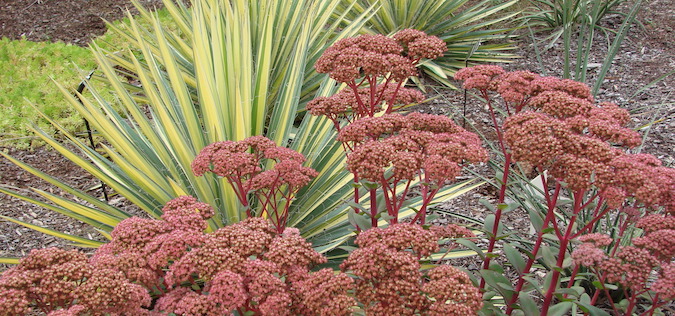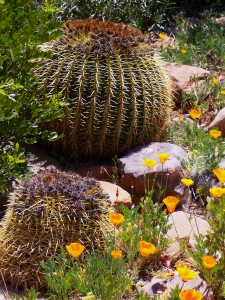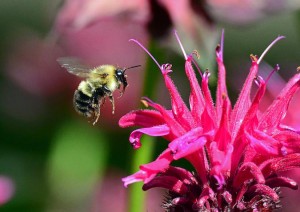
How Dry I Am: Xeriscaping for the Waterwise Homeowner
September 3, 2016The first time I heard the word “xeriscaping” as a landscaping philosophy, I thought it was “zero scaping,” which is my own personal technique. Wow, had my yard gone mainstream? Not so much.
Xeriscaping means “dry landscape,” and was first coined in the early 1980s. Originally it referred to landscaping for water preservation and drought resistance in dry or desert-like climates and featured plants such as cacti and succulents. The idea was to landscape and garden using as little supplemental irrigation as possible.
Luckily for those of us who are fine with a little cactus  garden in our bathroom, but not in our yard, the concept has taken on a broader interpretation over the years. Now you’ll find it applied to just about any landscaping or gardening scheme that saves or preserves water.
garden in our bathroom, but not in our yard, the concept has taken on a broader interpretation over the years. Now you’ll find it applied to just about any landscaping or gardening scheme that saves or preserves water.
Xeriscaping is based on seven basic principles:
1. Plan your landscape for water conservation
2. Prepare or amend your soil
3. Select plants that are known to do well in your area
4. Mulch
5. Use proper lawn care
6. Consider using grass only where it has a functional benefit
7. Determine and use the best watering method for your soil
Practically speaking, here are some relatively simple ways to implement xeriscaping concepts right now:
1. Group plants with similar water needs together. Use a zoned approach, placing your most water-reliant plants closest to the house and water sources, and most drought-resistant plants farthest from the house.
2. Use plants native to your area that already are acclimated to your environment.
3. Make sure you’re using the appropriate grass for your region. Consider shrinking the area of turf coverage, using native shrubs and ground cover and natural stone walkways as alternatives to an all-grass lawn.
4. Use mulch to keep plant roots cool and lessen water evaporation.
Bonus! Xeriscaping generally results in lower maintenance lawns and gardens.
For those living in the DC metro area (I’m one), where it seems to have been raining a lot lately, I can hear you now: “Forget about xeriscaping – bring on the rain garden!” I have two words for you, and you’ll thank me when it’s stinking hot and there isn’t a cloud  in the sky: Rain Barrels. Use those torrential downpours to capture water for irrigating the plants you’ll be placing closest to the house (see Item 1 re: grouping plants).
in the sky: Rain Barrels. Use those torrential downpours to capture water for irrigating the plants you’ll be placing closest to the house (see Item 1 re: grouping plants).
With weather patterns becoming more severe and unpredictable, and natural resources such as water becoming scarcer, it makes sense to take a more thoughtful approach to landscaping, whether you go full-on xeriscape or just add a few native plants to your landscape. Every little bit helps. So the next time you’re at the garden center, look past that water-guzzling tropical beauty and head straight for the magnificent bee balm. Just as colorful, much more interesting, and it provides nectar for bees and hummingbirds!
For more information about xeriscaping and native plants in Virginia and Maryland, check out some of these resources:
Virginia Master Gardener Association
Drought Tolerant Native Plants for Virginia
Virginia Cooperative Extension: Creating a Waterwise Landscape
University of Maryland: Xeriscaping and Conserving Water in Landscape
17 Landscaping Ideas to Increase your home’s value
Interested in learning how xeriscaping and other forms of landscaping impact the value of your home? Contact Lisa at Hollish Hill Group.


Lisa – Buyers love a home with low-maintenance landscaping. And curb appeal leads to a great first impression. Great post!